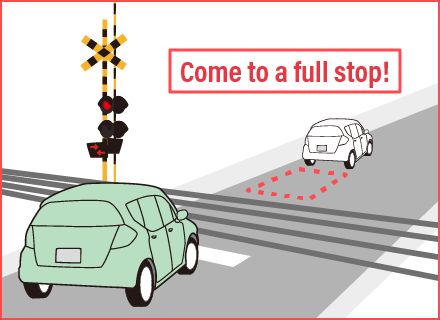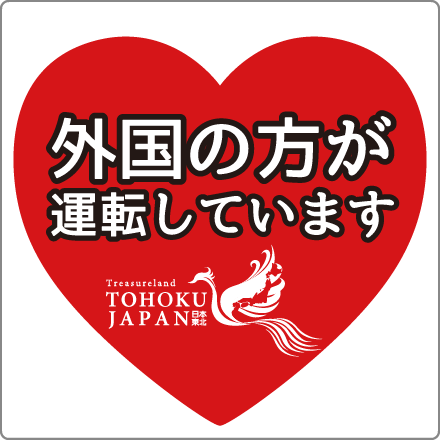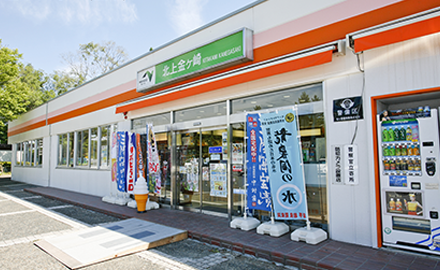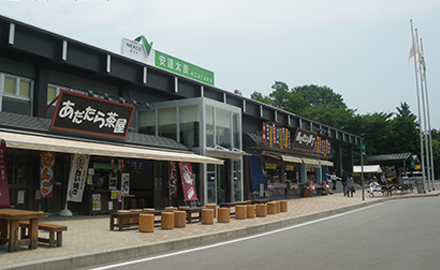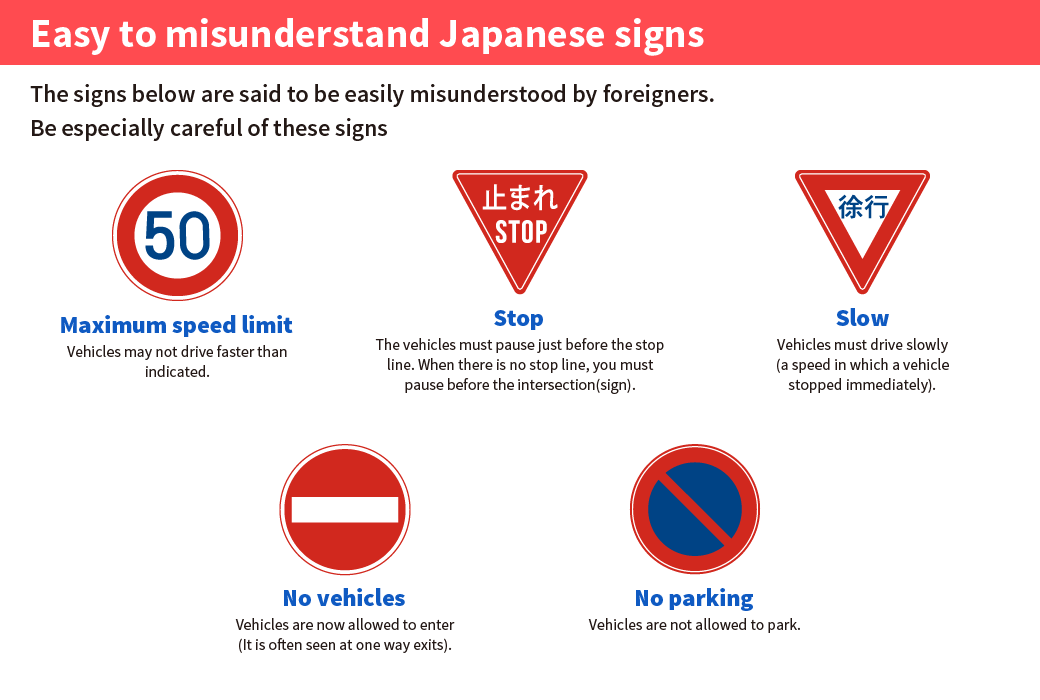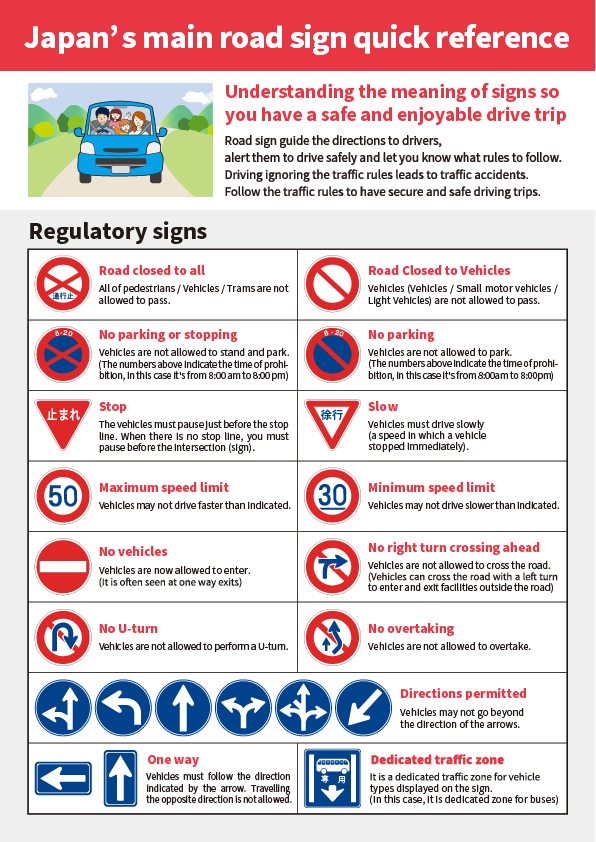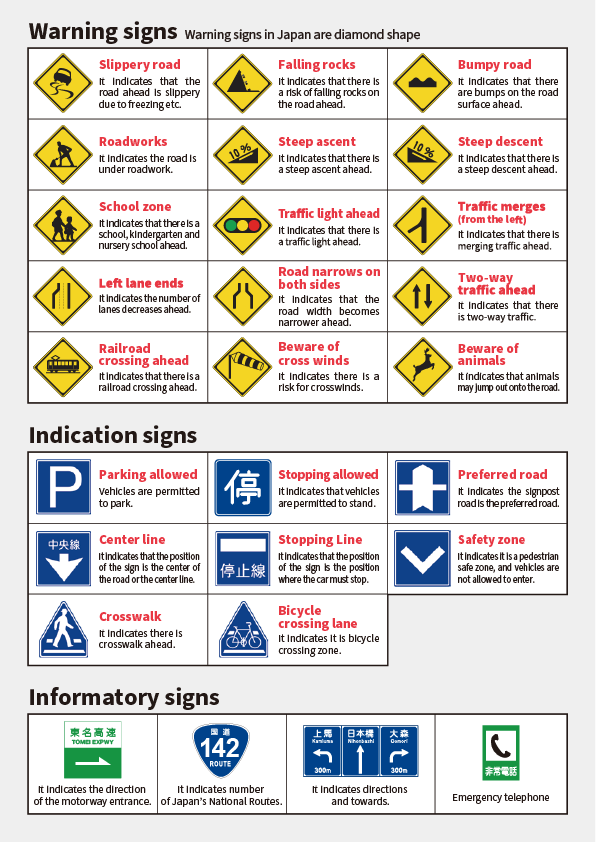Left-hand Traffic
Cars drive on the left side of the road in Japan.
Always stop at a red light
In Japan, when approaching a traffic signal that is red, all cars traveling straight ahead, turning left, and turning right must stop and wait until the signal turns green.If there are pedestrians ahead of the place you turn left or right, they have right-of-way.
*However, if there is an arrow traffic light below or beside the traffic signal, you may proceed in the direction indicated by the arrow when green.
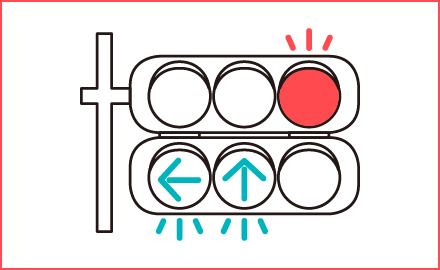
Wait when turning right
In Japan, if there is an oncoming vehicle when turning right at a green traffic light, the oncoming vehicle has right of way. Turn right after the oncoming vehicle has passed through the intersection or turned left.
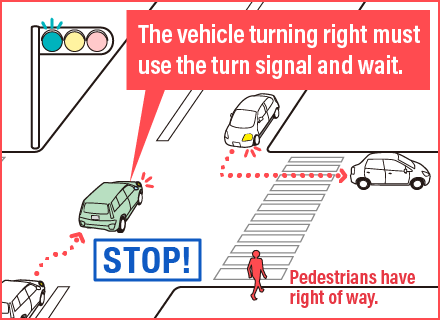
Pay close attention to pedestrians and bicycles
Pedestrians always have right of way under Japan's traffic rules. Before turning left or right, if you find pedestrians passing at a crosswalk or pedestrians at a crosswalk without a traffic light, stop and wait for them to cross at the road. When bicycles pass at a crosswalk, wait for them in the same way.
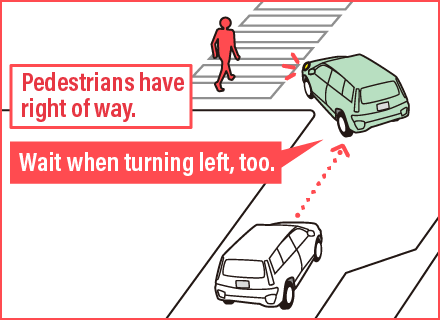
Come to complete stop at "止まれ" and "STOP" signs.
You must stop just before the stop line ahead of the traffic sign shown on the right side. If there is no stop line, you must stop before the stop sign. If the stop line or sign is ignored and an accident is caused, “those who didn't stop” bear heavy responsibility.
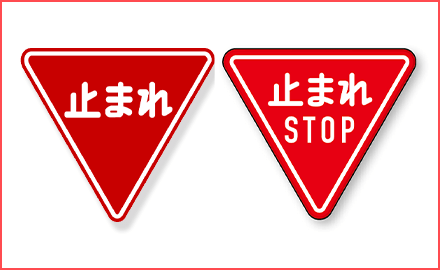
Always stop at railroad crossings
In Japan, you must stop before crossing railroad tracks. Come to a full stop and check that no trains are approaching from the right or left. Also, make sure the vehicle ahead of you has crossed over the tracks before entering the crossing. Be careful about the clog on the further side of the railroad crossing and take care not to stop within the crossing for a long period.
